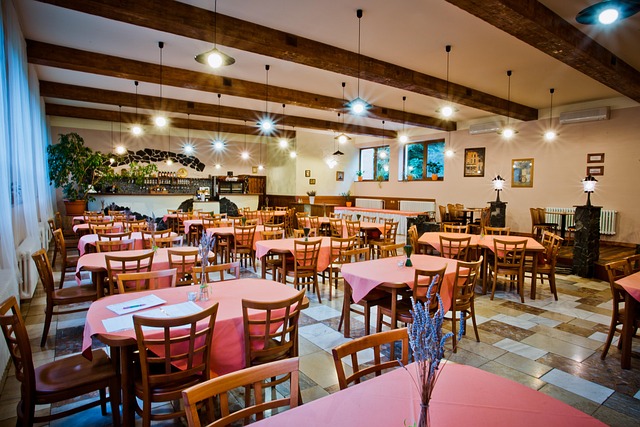Share This Article:

American Workers Dumping Dining Out, Opting for More Economic Home-Cooked Meals
20 Nov, 2025 Chriss Swaney

Labor Landscape
Dining out is dead. That is the latest report from a YouGov survey that reports that 37 percent of Americans are staying home to eat and prepare meals.
The survey found that many Americans are not eating out due to higher prices. Eighty-two percent of diners say restaurant prices have increased over the past year. And among lower- income households, the number rises to 44 percent. The share of middle class Americans avoiding a restaurant visit hits 33 percent and among higher income groups, 27 percent say they dine out less frequently.
Paula A. Calabrese, a Pittsburgh writer and consultant, said she was not surprised by the survey results. “I’m afraid of uncooked foods in restaurants, like salads. I usually have an upset stomach after having them outside my own kitchen,’’ said Calabrese.
Calabrese also said that because she is on a fixed income, she prefers to enjoy cooking at home. “I like to experiment with new recipes. It’s also a way to ensure what I eat is safe and healthy.’’
Susie Dempsey of West Alexander, Pa., a retired teacher, said she rarely eats out because she is on a very strict budget and is supporting two of her eight grandchildren. The survey reports that 58 percent of Americans are skipping restaurants and fast food chains to save money in this challenging economy, and 57 percent are now dining out less than 12 months ago due to higher living costs. Only a smaller portion reports changing lifestyle as the reason for dining out less than before.
In fact, fine-dining restaurants have recorded the sharpest decline in visits in 2025. The survey found that 46 percent of Americans visit high-end restaurants less often than they did a year ago. Other categories have seen smaller decreases. Diners visit fast-casual, casual-dining or café-style restaurants less than before.
A number of restaurants across the United States, including some from the biggest chains have closed or are planning to close in 2025. This is despite the fact that the U.S. fast-casual restaurant market is projected to grow significantly and add about $84.5 billion in revenue between 2025 and 2029, according to OysterLink, a job platform for the restaurant and hospitality industry. In January 2025, restaurant sales revenue reached $98.6 billion, a 5.4 percent year-on-year increase. But OysterLink reports that increase can be attributed to inflation, and not increased patron traffic to restaurants.
The closure of some of the most popular restaurants and chains across the U.S. like those operated by Hooters, Red Robin and Wendy’s, is not only affecting diners, but it also affects the livelihoods of thousands of hospitality workers and weakening the communities that rely on these establishments for jobs, social connections and economic stability.
But there are other cracks in the restaurant business when it comes to fine dining. Industry experts report that multi-Michelin-starred destination restaurants were able to exist without criticism for so long in part because of a certain kind of fanfare doled out by food and lifestyle publications. But as media reports stack up and staff feel emboldened to speak out on social media, the house of cards that sustained and drove the popularity of many elite restaurants for so long is beginning to crumble.
“As a diner and former restaurant worker, I have no desire to go back to the industry where pay is low and the hours are long and hard,’’ said Roberto Soto, a retired chef from Lincoln Park, N.J.
The other major factor that killed restaurants and dining out was the COVID epidemic which permanently closed 16,000 restaurants across the country, according to the U.S. Commerce Department.
“The Trump immigration tack is also hurting restaurant growth as we lose so many migrant workers in our establishments,’’ said Ralph Johns, a former restaurant owner from Pittsburgh, Pa.
Historians also point out that there is a movement to cook more cultural and family traditional dishes that are unavailable at restaurants. “In our Italian-American family, we pride ourselves on preparing cultural favorites: pastas with various sauces, pastas stuffed with cheeses, eggplant, peppers, meatballs and other family fare. Nothing we eat out ever compares favorably with our own home cooking,’’ Calabrese said.
Restaurants and bars added 11,000 jobs in August, according to new data from the U.S. Bureau of Labor Statistics, continuing the industry’s steady, if tepid, rate of employment growth this year.
AI california case file caselaw case management case management focus claims compensability compliance compliance corner courts covid do you know the rule exclusive remedy florida glossary check Healthcare hr homeroom insurance insurers iowa kentucky leadership medical NCCI new jersey new york ohio pennsylvania roadmap Safety safety at work state info tech technology violence WDYT west virginia what do you think women's history women's history month workers' comp 101 workers' recovery Workplace Safety Workplace Violence
Read Also
About The Author
About The Author
-
Chriss Swaney
Chriss Swaney is a freelance reporter who has written for Antique Trader Magazine, Reuters, The New York Times, U.S. News & World Report, the Burlington Free Press, UPI, The Tribune-Review and the Daily Record.
More by This Author
Read More
- Dec 10, 2025
- Liz Carey
- Dec 10, 2025
- Chris Parker
- Dec 10, 2025
- Frank Ferreri
- Dec 10, 2025
- NCCI
- Dec 09, 2025
- Anne Llewellyn
- Dec 08, 2025
- Chris Parker




